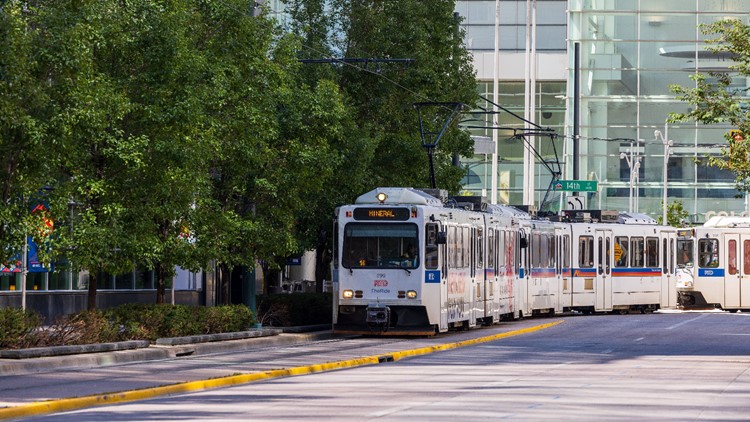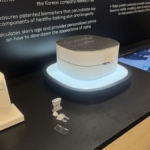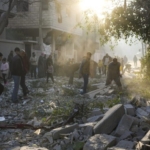[ad_1]

The state regulators in charge of overseeing RTD’s safety performance are asking for more frequent update from the agency on identifying problems and making repairs.
DENVER — Trains aren’t the only things moving slower this summer. The Regional Transportation District was slow to tell the public why light rail trains are inching along Interstate 25, and the agency never told state safety regulators about it.
Now, Colorado’s Public Utilities Commission is increasing scrutiny on RTD’s safety practices and asking the agency to be more transparent with its riders.
Right now, RTD trains are slowing down to 10 mph between Colorado Boulevard and Southmoor (Hampden Avenue) and between Bellevue Avenue and County Line Road. This comes after RTD inspections uncovered railhead burn in different parts of the track between the Colorado and County Line stations, but not the entire stretch of track.
According to RTD, railhead burn is a surface defect on the top side of the track where light rail vehicle wheels make contact with the rail. The top surface of the rail is known as the “railhead.”
9NEWS requested the previous inspection reports from the southeast corridor. On Friday, RTD provided more than 500 pages of inspection reports, showing inspectors rating rails on a pass/fail basis. The southeast line railhead received “fail” ratings at the start of the year.
RTD started following new standards in May, which call for trains to slow to 10 mph if the railhead burn is found to be three inches or more.
In a letter to RTD on Friday, PUC Director Rebecca White said the regulatory agency was never told about these findings along the southeast line, nor the new slow order.
The letter says the PUC found out about these issues through media inquiries. Now, state regulators are trying to make sure that doesn’t happen again.
The PUC is asking RTD for all safety inspection results for the southeast corridor from Jan. 1 to June 14. It wants those results to include the condition of each rail segment and any issues RTD identifies. The PUC then expects updates on these reports.
“We’ve asked for updates every 48 hours from RTD on what they’re finding out on the line, as well as what their updates are for when those repairs will be made,” White told 9NEWS Monday.
She and the rest of the PUC also asked for detailed schedules for completing similar inspections of RTD’s additional light rail lines, with a particular focus on the southwest and Central Platte Valley corridors.
“[We requested] to receive similar records for the southwest line and the Central Platte Valley line, which we flagged, in particular, because they are of a somewhat similar age to the southeast line, all approaching around that 15–20-year mark of being in service,” White said.
Safety inspections and updates are not the end of the PUC’s scrutiny.
The state regulators want RTD to “continue to increase its transparency to the public on its efforts to improve rail conditions and return service to normal operations,” according to the letter.
RTD’s current Public Transportation Agency Safety Plan says that “Customers and the general public must be confident that the RTD transit system is a safe system.”
“Recent events have shaken that confidence along the SE Corridor,” the PUC letter argues.
The PUC’s letter says that poor conditions of downtown rail lines show the safety plan is inadequate and can’t identify issues in a way that minimizes impacts on riders. So, regulators want RTD to update its safety plan.
The PUC requests that RTD make changes to its safety plan that address rail infrastructure improvements, specifically to the southeast line, and send the updated plan to state regulators by July 31.
The PUC is asking for the updated plan to include how the new asset condition evaluation criteria will be implemented across the light rail system. By Aug. 30, the PUC wants RTD to include a new list of prioritized investments, including all of the unaddressed rail issues found through RTD’s recent review.
“You can sort of naturally understand the connection there,” White said. “The better you take care of your assets, the safer your system is.”
White said PUC inspectors will be out in the field over the summer checking on RTD’s improvements and the rebuild of the rail line downtown and along the southeast line.
In response to the PUC’s list of requests, a spokesperson for RTD said the agency was under no obligation to tell the PUC about safety issues it identified.
The agency sent the following statement to 9NEWS:
RTD staff met with the Colorado Public Utilities Commission (PUC) on Friday, June 14, to discuss the current speed restrictions, and the agency continues to provide regular updates to the PUC. As requested in the PUC’s June 14th letter, RTD is working to compile and provide all requested information.
RTD and PUC staff are in regular communication and always strive to have open and frequent dialogue. RTD has been, and continues to be, highly communicative with PUC, as the state’s safety oversight agency.
The PUC’s regulations specifically outline RTD’s reporting requirements. In relation to the recent inspection findings and subsequent speed restrictions, there was no requirement to report this type of situation.
In its letter, the PUC claimed it was making these requests of RTD as part of the commission’s “responsibilities as a State Safety Oversight Agency (SSOA) and staff’s audit authority” as delegated by commission decisions.
SUGGESTED VIDEOS: Next with Kyle Clark
[ad_2]
Source link







